|
|
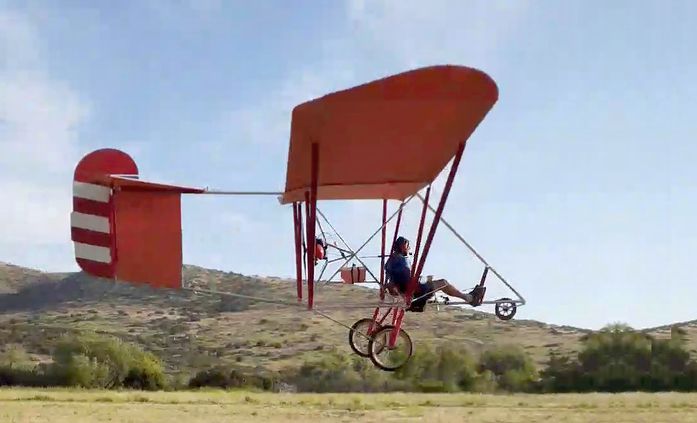 |
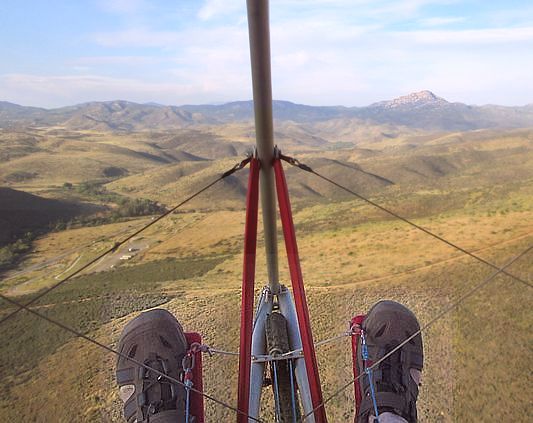 |
For my flying blog, thoughts, and impressions, go to: |
Bluebird Recent Flights Page |
Here's a link to my Bluebird video on Youtube: |
Bluebird Ultralight Airplane...Flying Slow |
Bluebird pictures page: |
Bluebird Photo Page |
Bluebird
technical drawings are free and downloadable using the links
provided here (89 drawings in the same style as the
Bug/Goat/Bloop drawings). One Zip folder contains files in PDF
format. The second folder contains drawings in TCW file format
(TCW is native Turbocad for CAD applications)The last two
folders are DXF files, problematic but useable. Part 1 &
Part 2 should be downloaded, then combined.
|
Bluebird PDF DrawingsBluebird TCW DrawingsBluebird DXF Drawings Part 1Bluebird DXF Drawings Part 2 |
Bluebird
technical drawings for individual online viewing are at this
link:
|
Bluebird
Drawings Online
|
Motorfloater Story Boards 1 &
2, presentations of motorfloater topics and activities:
|
Motorfloater Story Board 1Motorfloater Story Board 2 |
|
Unfortunately for Bluebird motorfloater flying, my local airfield has curtailed all ultralight flying indefinitely. This means that Bluebird flying has reached an end for the present since I have no alternative airport or other place at which to fly in a practical way. My goals for the project have been mostly achieved, so it's not a bad time to stop or change course, but I do miss my frequent flying. I hope I have contributed to innovative ultralight flying and hope to see more of it. |
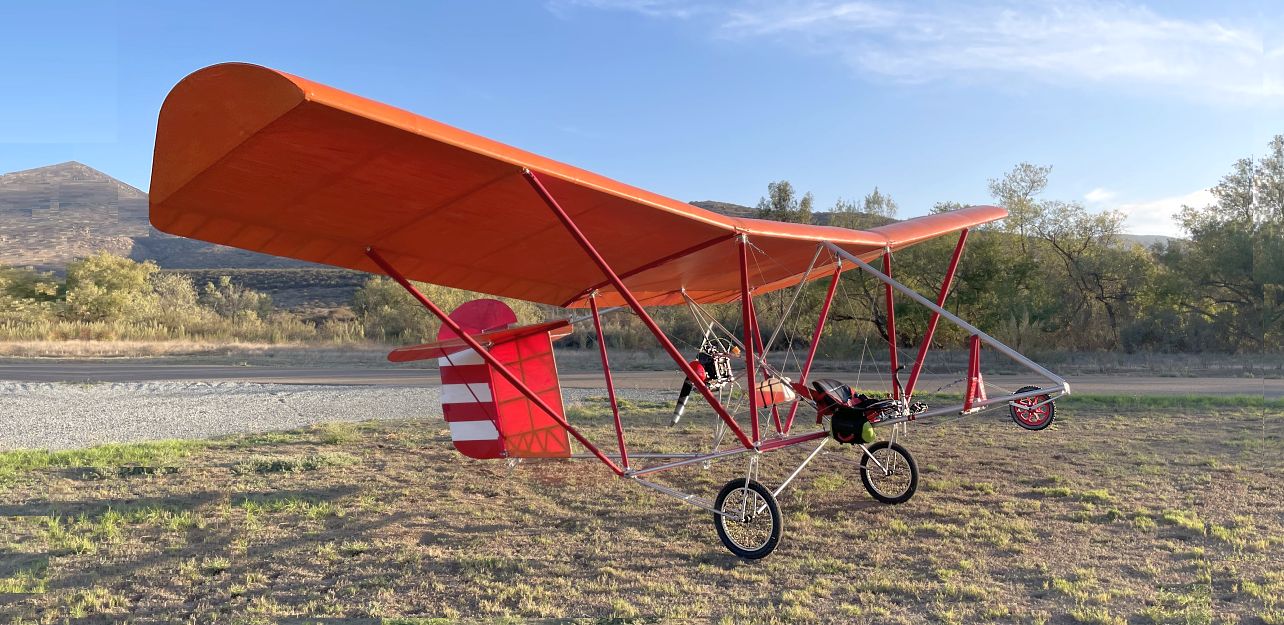
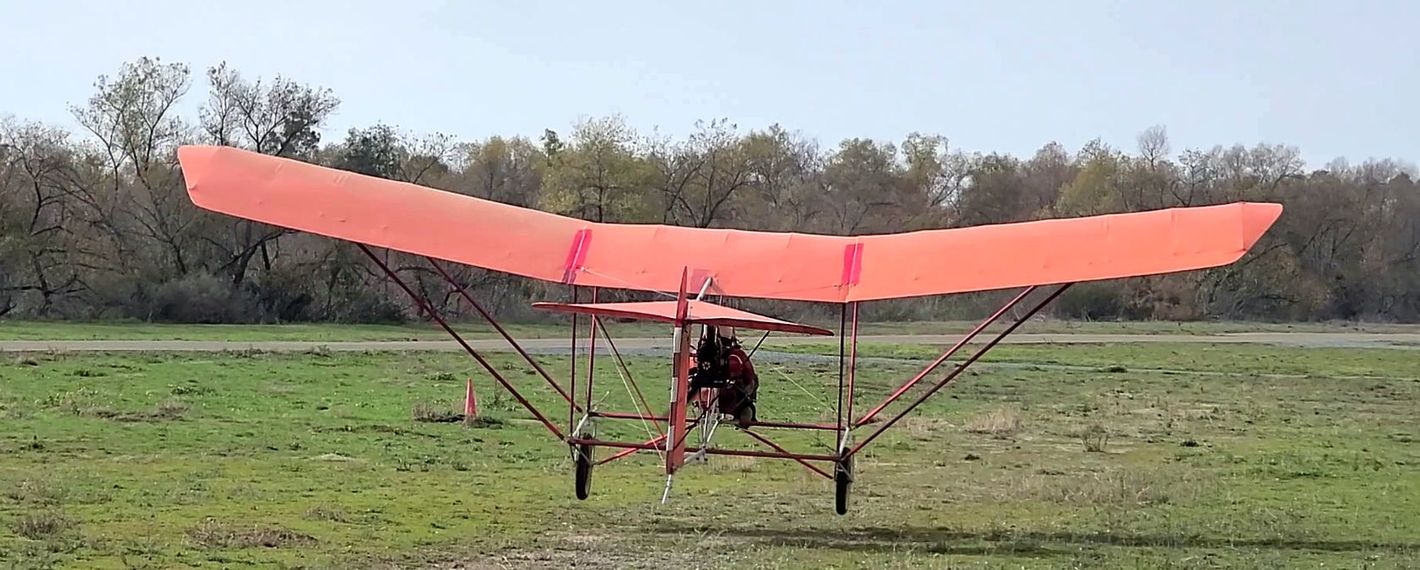
|
Full throttle, fully loaded,
clawing for altitude....my usual takeoff. |
Here I am, taking a quick self portrait in flight. |
|
Fan Mail!
|
Thanks
for the kudos and encouragement!
|
|
|
"Really appreciate the frequent updates on bluebird. Love the simple low power approach. Your philosophy of building and flying how ultralights were intended makes sense. It seems so many have gone to increased wing loading and bigger engines. I guess as a glider pilot I just never trust engines. I’d love to see a YouTube of you climbing to about 500 feet and kill the engine and make a dead stick landing. Also you mentioned electric propulsion. That wide center section might be ideal for multiple RC electric engines. Thanks for what you do and sharing. Looking forward to your reference drawings...I’d like take a crack at the rudder." |
Yes,
I suppose I should demonstrate an engine off landing, I
haven't done that yet.
|
|
|
"In
regards to ... clipping the wingspan on bluebird, how about
narrowing the center section. I know trailer ability is not a
design priority for you but it looks like the outer wing
panels might remove easy. If that center section was about 3
feet wide maybe it would fit in a trailer..."
|
The Bluebird center section is eight feet wide to provide a wide wheel track and hard points for attaching the sweep cables that stiffen the nose and tail structures. When you roll or land in a cross wind without ailerons you keep the nose low and that puts the weight on the wheels, allowing the widely spaced wheels to keep the wings level. Other two axis planes have flown with narrow wheel tracks, but I don't like being on the verge of tipping while ground rolling, and the wheels have proven to be effective for this, as well as otherwise functional and stable. Building a light, stiff airframe for an ultralight is hard, but the cable rigging of the Bloops and Bluebird, as well as the Goat glider, has proven to be worthwhile. This leads to a wide, bulky lower frame on the Bluebird. I'm going to keep it, maybe it will set a new style. How about an eight foot wide trailer? |
|
" why [is] the bluebird's do-not-exceed speed is so slow? I get that it is supposed to be slow, but is 45 mph really the maximum limit? with 100lbs to spare, couldn't some of it have gone to more structure? ...would a slightly larger engine have any detrimental effect on the bluebird? (provided there is that aforementioned support) |
In context, 45 mph. is fast for
paragliders, hang gliders, and much of the slow flying
crowd! It becomes much less comfortable to fly as speeds
increase above 30 mph., the wind blast is undesired, which
is why I'm not excited about other open frame planes such as
the Quicksilver, which I regard as a fast and heavy
airplane. Just about every other airplane in the universe
which is not a motorfloater is designed to go fast, have you
considered one of those?
A larger engine will interfere with your flying and complicate control of the aircraft, and the increased dead weight on landing will require a longer runway. The safety advantages you gain from getting high faster may be questionable if you now need a bigger, smoother field for an emergency landing. A bigger engine will also require more fueling effort and usually will be more complex and harder to maintain, and noisier. Even so, in the Bluebird you probably would want a more powerful engine at higher altitudes, |
Let's call this a "hole in one" landing. A clever detective would notice the wobbly wheel track from the squirrel crater to the bent landing gear struts, and would make a preliminary deduction that the motorfloater was attempting to land half way off the runway when a mishap occurred. Actually I was anticipating a cross wind from the left which wasn't there. I should just fly a good crab angle, as the need arises, and stay over the runway.After propping up the wing, bending the wheel back into position, and tying things in place with rope, I rolled the plane back to the hangar.As of right now the repairs have
already been made, but I'm bracing and enlarging some of the
landing gear struts for greater strength.
|
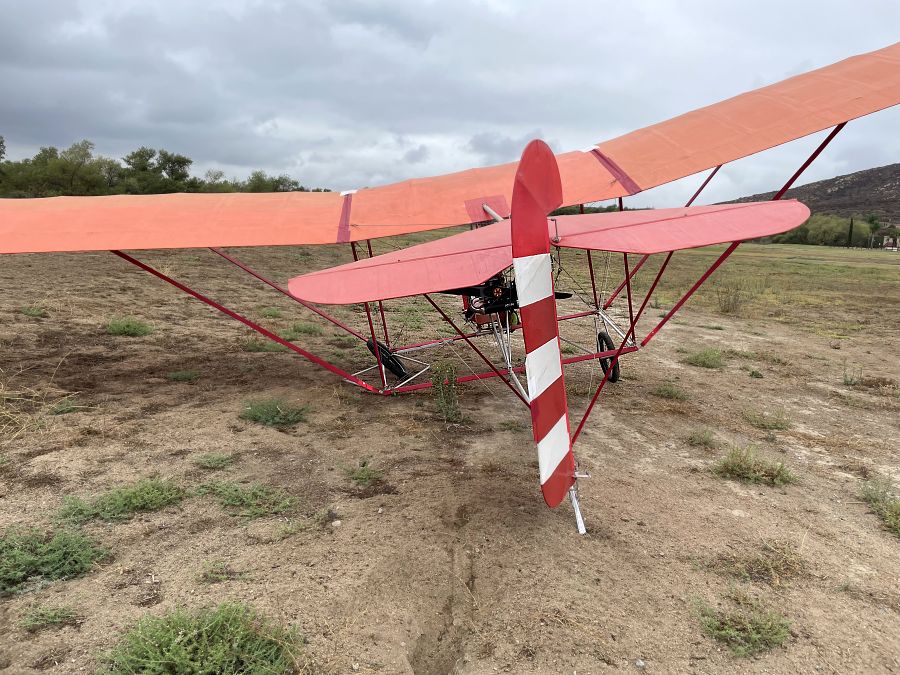 |
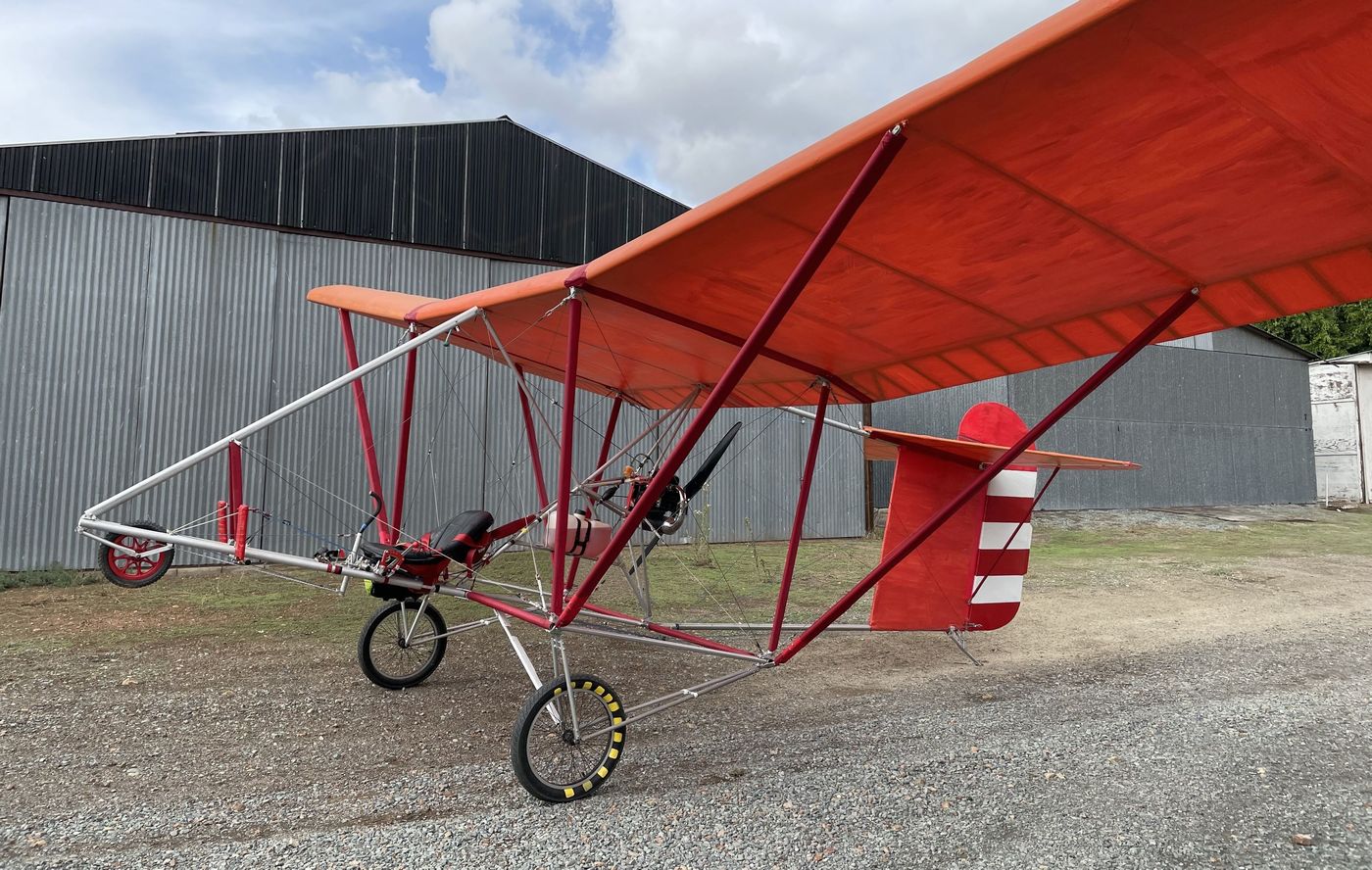
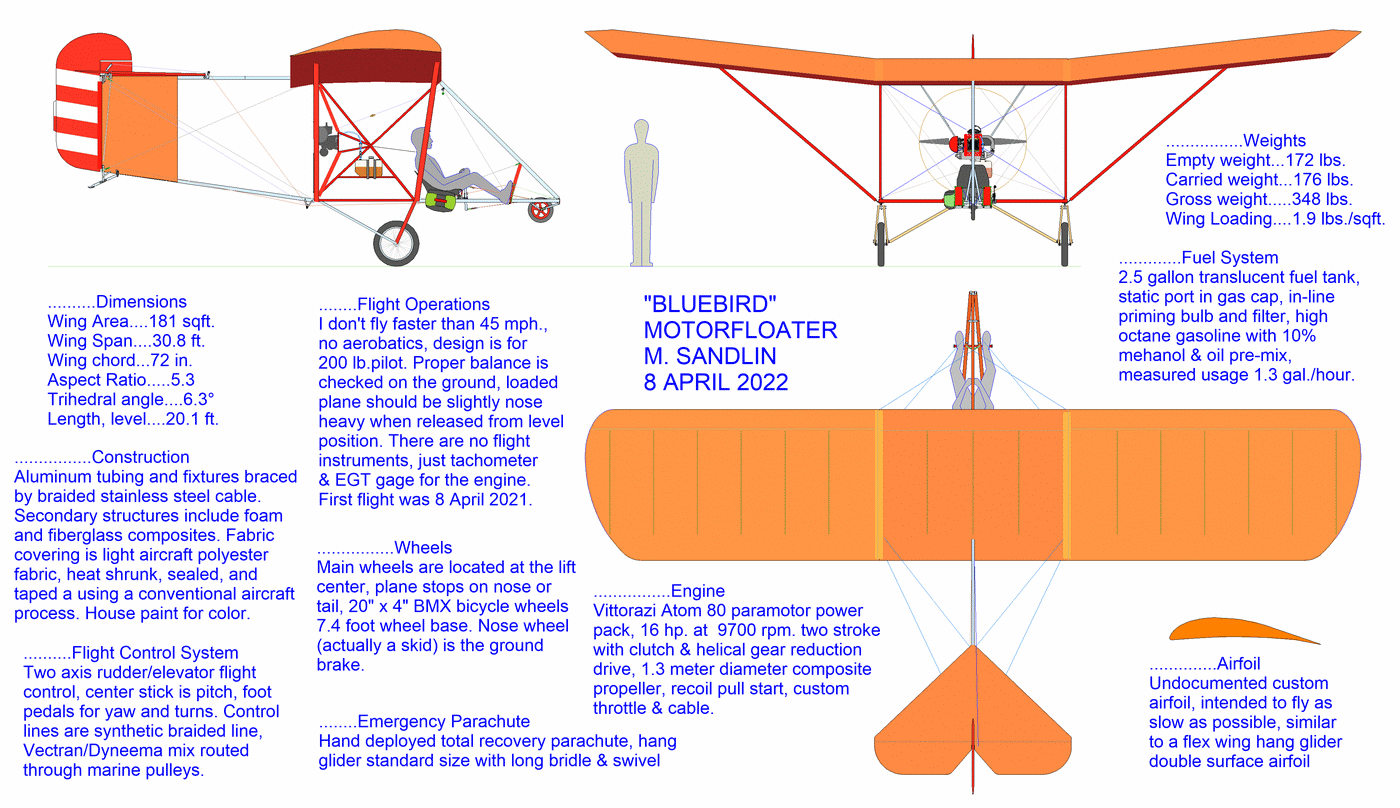 The
empty weight of the Bluebird is almost 100 pounds short of the
Part 103 limit. Many of the early ultralights were also very
light because they were converted hang gliders. A 16
horsepower engine would also not have been unusual.
The
design ideas in use here are mostly about a hundred years old.
The new aspect of the Bloop and Bluebird
is the very low wing loading (i.e., using a big wing on a light airplane) which allows really slow flight. I don't like to talk about expenses because they can generate responses involving unrealistic prices and substitutions, but they are a real part of airplane building, so here they are. I think it cost me about $8,000 to build this airplane. I used new parts and materials for almost everything. The biggest cost variant would he the parachute, my hand deployed system cost about $1000, but a rocket chute could easily be several times that and might easily cost more than the engine. The engine and prop cost $3000, aluminum materials cost maybe $2000, "off the shelf" items $1000, fabric materials $1000, radio equipment and helmet was again maybe more than the engine. Almost all of my materials were bought from large suppliers and shipped by ordinary parcel service. I limited aluminum stock to no longer than 8 foot pieces for delivery reasons. A slightly bigger engine should not increase the price much, but a more durable fabric job might. |